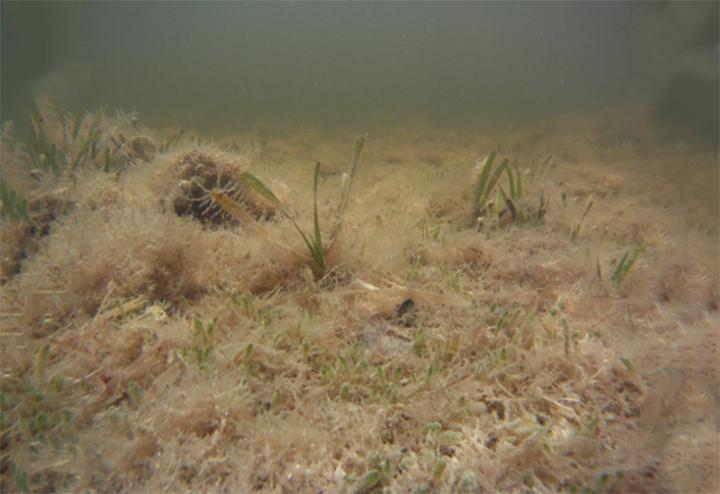
Credit: University of South Florida
Nearly 10,000 acres of lush seagrass vanished from Florida Bay between 1987 and 1991, leading to massive ecological changes in the region near the Florida Keys. Abundance of the seagrass, Thalassia testudinum, more commonly known as turtlegrass, a foundation species of the Florida Bay ecosystem, decreased extensively during what is considered to be one of the largest declines in seagrass cover in recent history.
Researchers from the University of South Florida, the Florida Fish and Wildlife Conservation Commission (FWC) and the University of North Carolina Wilmington documented the response of seagrasses after the die-off. Their detailed data collection for over 20 years across the large area of impact has provided unique insight into seagrass resiliency or the ability of a coastal ecosystem to recover after the extensive loss. This study, published in “Scientific Reports,” is extremely timely as the work provides a framework for how future recovery of a new seagrass die-off, recorded in 2015 in the same location, may still be possible.
Seagrass plays an important role across much of the Gulf of Mexico and Caribbean Sea, providing critical habitat and feeding grounds for many species of fish, turtles and other wildlife. They’re considered to be one of the most productive ecosystems in the world and in Florida Bay contribute to a sport fishing industry worth hundreds of millions of dollars per year.
USF Distinguished University Professor Susan Bell first learned of the 1987 large-scale seagrass die-off in Florida when she got a call from a long-time fisherman friend who noticed the seagrass disappearing and large amounts of dead seagrass. Bell notified colleagues at FWC, who began to detail what was happening across a roughly 15 square mile stretch of the bay.
For more than 10 years, researchers saw little to no change in seagrass, especially in the levels of turtlegrass. However, after another decade of monitoring, researchers reported a return to pre-die-off levels of turtlegrass in the region. The study shows that the entire sequence of die-off, algal blooms and recovery took 17-23 years. Both the long duration of the study and large area over which the data were systematically collected were unique to reports of seagrass recovery. Also, most studies of marine populations that recover from some kind of disturbance are linked to human intervention, such as removing a source of pollution, but in this case the recovery required no human activities.
“While the fact this system recovered after the 1980s die-off is fantastic, we really wanted to figure out the mechanisms that allowed recovery to happen,” said Bell, a faculty member in the USF Department of Integrative Biology. “What we discuss are a number of features that underlie the seagrass recovery: the system was remote, remnants of seagrass leftover after the die-off served as a catalyst for repopulation and having multiple species of seagrass present increases the likelihood for recovery.”
In the last case, two opportunistic seagrass species were first to increase in abundance after the die-off and likely facilitated the return of turtlegrass.
Bell believes this study can serve as a framework for other regions experiencing seagrass die-off, including once again in Florida Bay, which is still in the midst of the die-off that began in 2015. Their work warns that evaluation of ecosystem resiliency may take decades to detect, mandating long-term studies. Researchers are continuing to study the changes in Florida Bay, but are hopeful that with the right conditions, the region can once again return to normal.
“Today, this monitoring program provides some of our best information on the status of the system,” said Brad Furman, a co-author of the study and research scientist at FWC’s Fish and Wildlife Research Institute. “Studies like this one allow us to set expectations for recovery, something we did not have in the 1990s, which is extremely important as we watch the Bay respond to the most recent die-off event.”
###
Media Contact
Tina Meketa
[email protected]
Original Source
https:/




